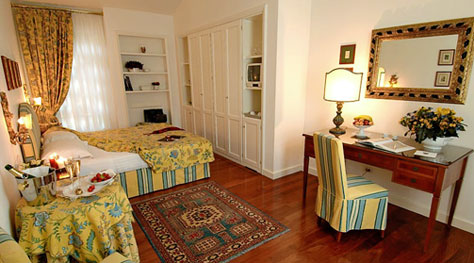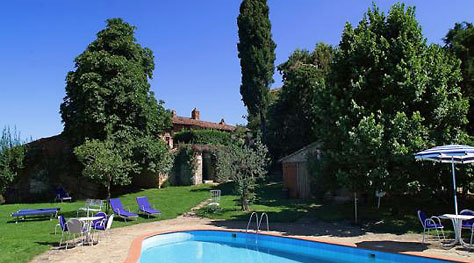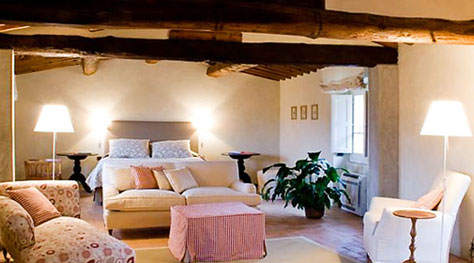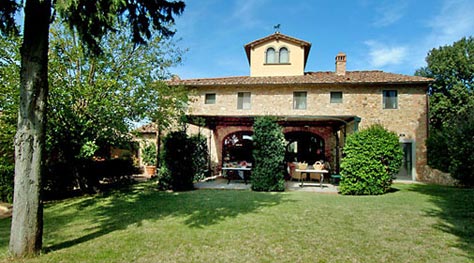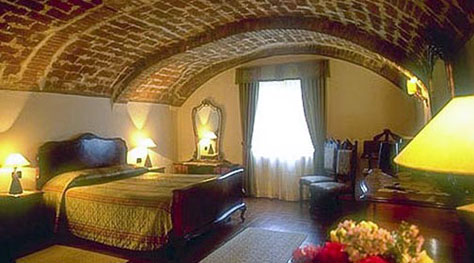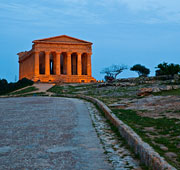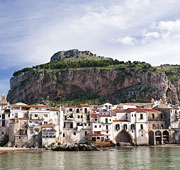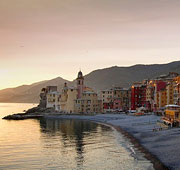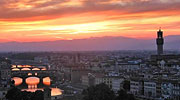Tuscan Trendsetter
From Maggio Musicale Fiorentino to Pitti Immagine , Florence never fails to grab the spotlight.
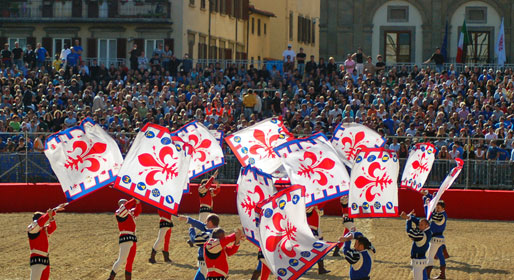
Great cities, like Florence, do not grow spontaneously, like wild flowers in a meadow. Such cities are cultivated by man and, in the case of Tuscany's art-packed capital, by families like the Medici.
Whilst the relationship between Florence's art works and the dynasty which ruled the city throughout the Renaissance is well known, not everybody will be familiar with the names of the men who have ensured that Florence continues to represent the avant-garde in many different fields: from sport to culture, from fashion to photography.
Soccer and songs
Flicking through the recent history books of Florence, under the chapter "Sport and Culture", we regularly come across the name of Luigi Ridolfi Vay da Verrazzano, an eclectic aristocrat who readily adhered to the calls to action from the Fascists and Futurists.
Ridolfi founded the Florentine Football Association in 1926. For the team of his new club, Marquis Ridolfi opted for a fetching purple shirt, emblazoned with the unmistakable logo of his city, the Florentine lily
Just a few years after he founded the city's football club, in 1933, the Marquis Ridolfi, together with the eminent conductor and composer Vittorio Gui, set to work realizing what was soon to become one of the city's most famous cultural events: the Maggio Musicale Fiorentino. Florence has hosted the festival of opera, classical music concerts, ballet and recitals, on an annual basis ever since.
Football crazy
Calcio Fiorentino is widely considered to be the forerunner of modern day soccer, a game with which it has many things in common.
Thought to originate in the 1400's, football in livery was played in Florence until the 18th century, when it was gradually abandoned. The game was revived in 1930, when it was decided to restore the tradition of "Calcio Fiorentino" in order to commemorate the historic game played on February 17th of 1530. This match, which took place in Piazza Santa Croce when the city was besieged by the Imperial army, was between the Bianchi (white) and the Verdi (green) teams.
Today, in Piazza Santa Croce, in the month of June, tourists join the locals to watch the historic parade and the matches, played out between the rival quarters of the city
A passion for fashion... and stone!
The twice-yearly Pitti Immagine shows are programmed to coincide with the international fashion calendar. For trend watchers, Pitti Uomo and Pitti Bimbo (the latest collections of men and children's wear) are unmissable events.
Not just a showcase for the latest designer fashions, Pitti Immagine also has sections dedicated to home furnishings, textiles, leatherwear and perfumes: all involving crafts with strong Tuscan roots.
In Florence, the craft of masonry is historic. Founded by Ferdinando I de' Medici in the 16th century, the Opificio delle Pietre dure is today a modern center specializing in restoration, and a museum (Museo dell'Opificio) in which visitors can admire the exquisite creations realized by pupils of the school over the centuries.
Picture perfect
Another of the city's museums, which demonstrates Florence's innovate artistic inclinations, is the Museum of Photographic History, located in the former Leopoldine complex in Piazza Santa Maria Novella. The museum is inextricably linked with Florence's Alinari family: who were among the first to understand the importance of this new art.
In 1852, the Alinari brothers opened their photographic workshop, the archives of which, to date, contain some 4 million images!
Itineraries
Main destinations
Hotels in the area
- Useful links
- Florence
- Florence Hotels
- Florence (all hotels)

